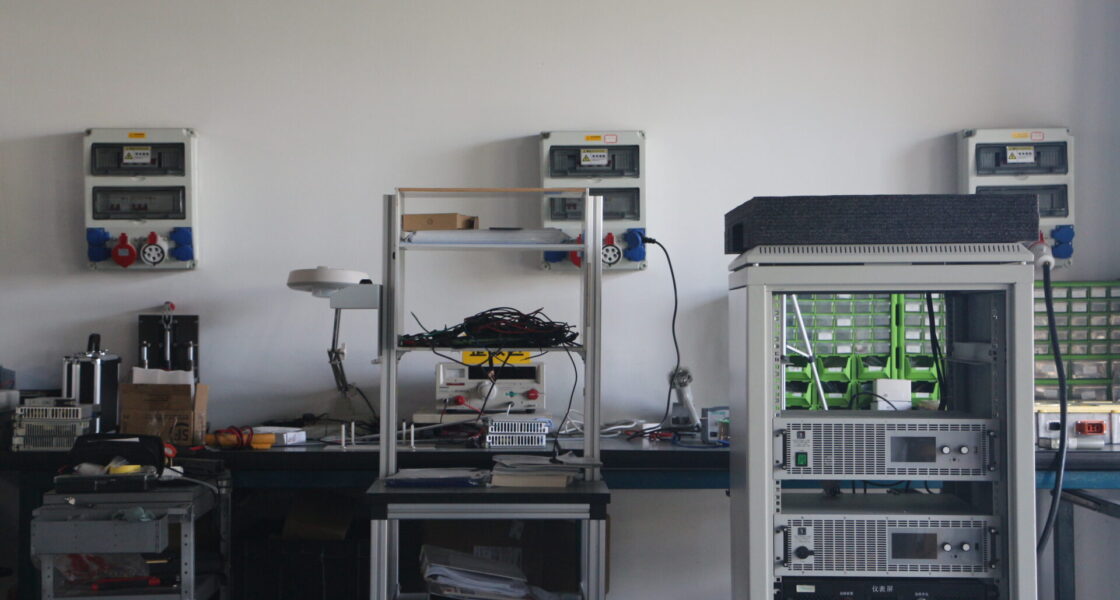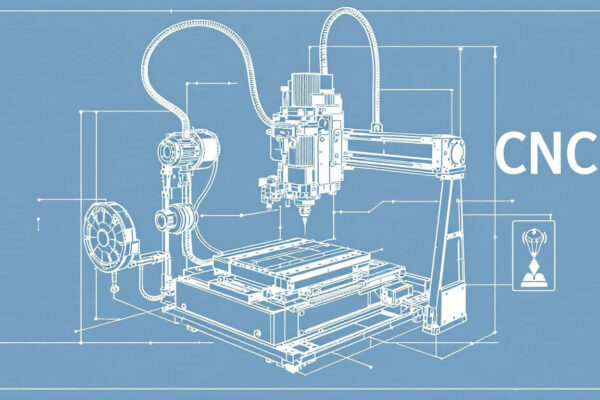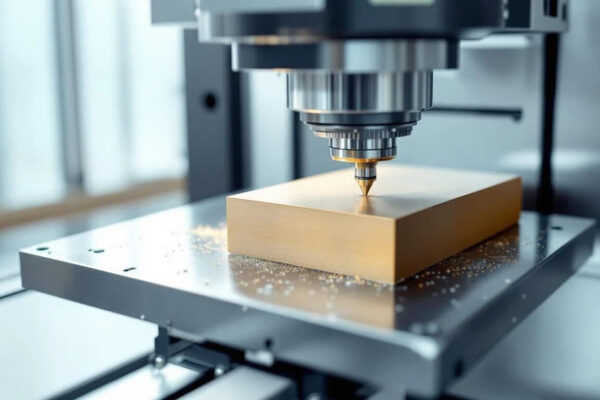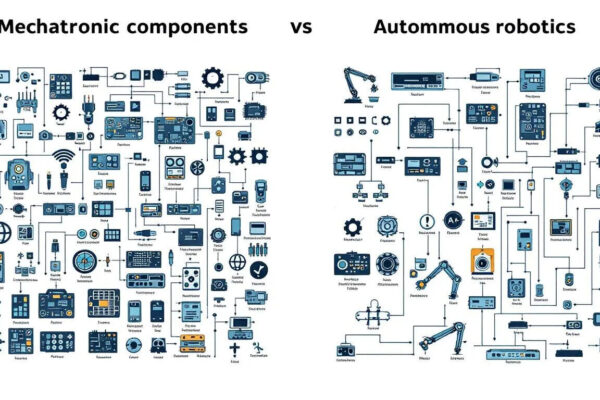Key Takeaways
- Mechatronics combines mechanical engineering, electronics, computer science, and control systems to create intelligent, automated solutions.
- Originating in Japan in 1969 at Yaskawa Electric Corporation, it has become a driving force behind Industry 4.0 and modern smart manufacturing.
- Applications span automotive, robotics, aerospace, and industrial automation—with growing integration of IoT and AI.
- Career prospects remain strong in emerging sectors such as AI, robotics, and cybersecurity.
- Future innovations focus on soft robotics, cyber-physical systems, and sustainable “ecomechatronics” aligned with global environmental goals.
Engineering the Future: What Mechatronics Really Means
Machines that think. Systems that adapt. Production lines that optimize themselves.
That’s the world mechatronics is building.
At its core, mechatronics merges mechanics, electronics, and computing to create intelligent systems that outperform conventional designs. Instead of treating hardware and software as separate worlds, engineers conceive mechatronic systems as integrated entities from the start—making them simpler, more efficient, and far more capable.
By embedding sensors, processors, and control algorithms, these systems can self-monitor, adapt to their environment, and optimize performance in real time.
From factory robots that assemble with millimeter precision to vehicles that brake, steer, and park themselves—mechatronics sits quietly behind the most transformative technologies of our age.
From Concept to Cornerstone: How Mechatronics Evolved
The term mechatronics was coined by Yaskawa Electric Corporation in Japan in 1969 and trademarked two years later. What began as a clever descriptor for merging mechanical and electrical components quickly became a framework for the future of automation.
Key turning points:
- 1970s: Microprocessors revolutionized control precision.
- 1980s: Computer-aided design and simulation brought digital prototyping to life.
- 2000s onward: AI, IoT, and big data made systems smarter and self-learning.
Today, mechatronics is the foundation of Industry 4.0 — enabling factories that are connected, adaptive, and autonomous.
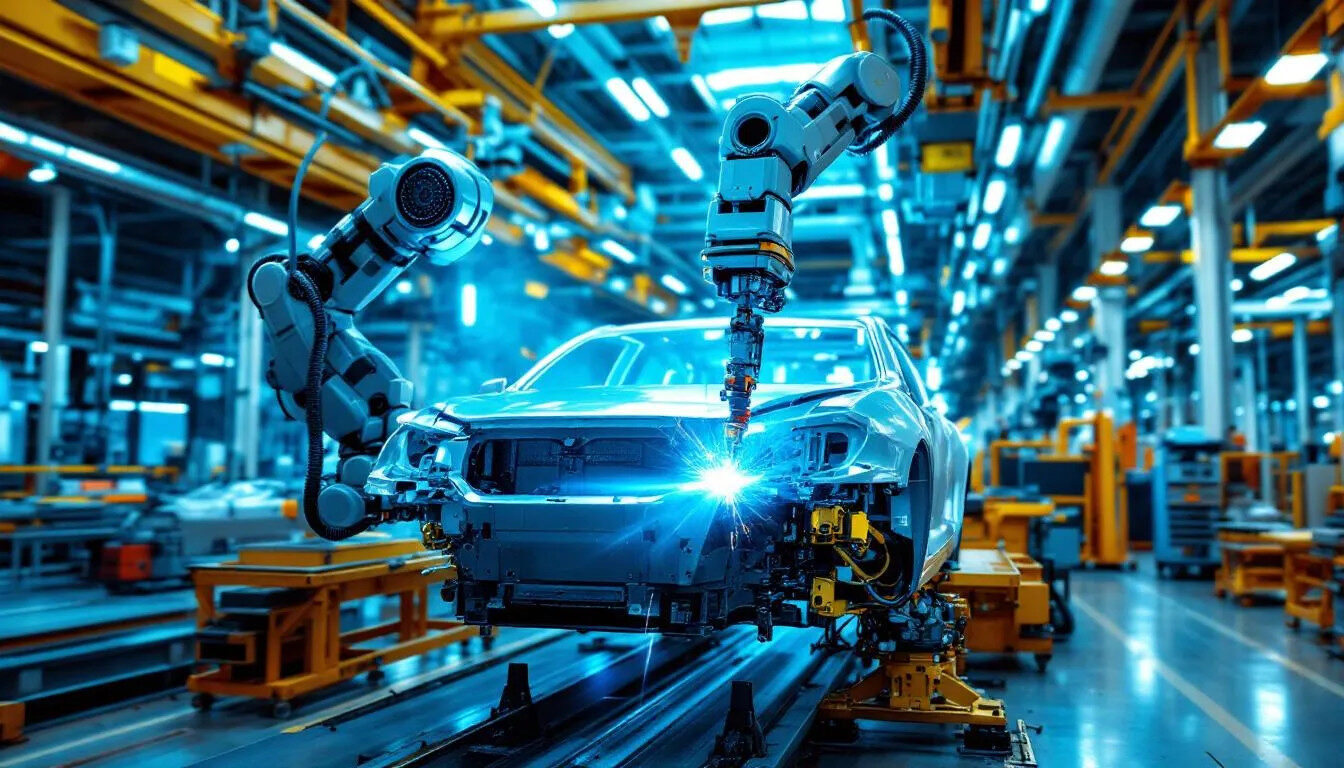
The Core Disciplines Behind Intelligent Systems
Mechanical Components: The Physical Backbone
Mechanical design provides the strength and precision behind every mechatronic system—from robotic arms to precision actuators.
Modern designs integrate hydraulics, pneumatics, optics, and smart materials such as shape-memory alloys and piezoelectric actuators. These components can change stiffness or shape in response to electrical signals—creating machines that physically adapt to their tasks.
Electronics and Control Systems: The Nervous System
Microprocessors, sensors, and control circuits form the nervous system that translates data into motion.
Using feedback loops and advanced control algorithms, electronics manage precision, stability, and timing.
Simulation tools like MATLAB and Simulink let engineers test and refine control logic virtually—reducing development time and improving reliability.

Software and Computing: The Cognitive Layer
Software gives mechatronic systems their intelligence.
Through programming environments like C/C++, Python, and ROBOTC, engineers build logic that allows systems to learn, adjust, and communicate.
Virtual prototyping and digital twins allow entire systems to be modeled, tested, and optimized before a single component is built.
Real-World Impact: Where Mechatronics Excels
Automotive
From anti-lock braking systems to adaptive cruise control, mechatronics drives the evolution of vehicle safety and automation.
Today’s cars don’t just move — they think, reacting to road conditions, predicting obstacles, and even assisting with parking and steering.
Manufacturing and Automation
In smart factories, mechatronics connects robots, sensors, and control systems into seamless production ecosystems.
- Smart injection molding machines adjust themselves to reduce waste.
- Predictive maintenance systems detect and fix issues before downtime occurs.
This convergence of mechanics, data, and AI defines the reality of Industry 4.0.
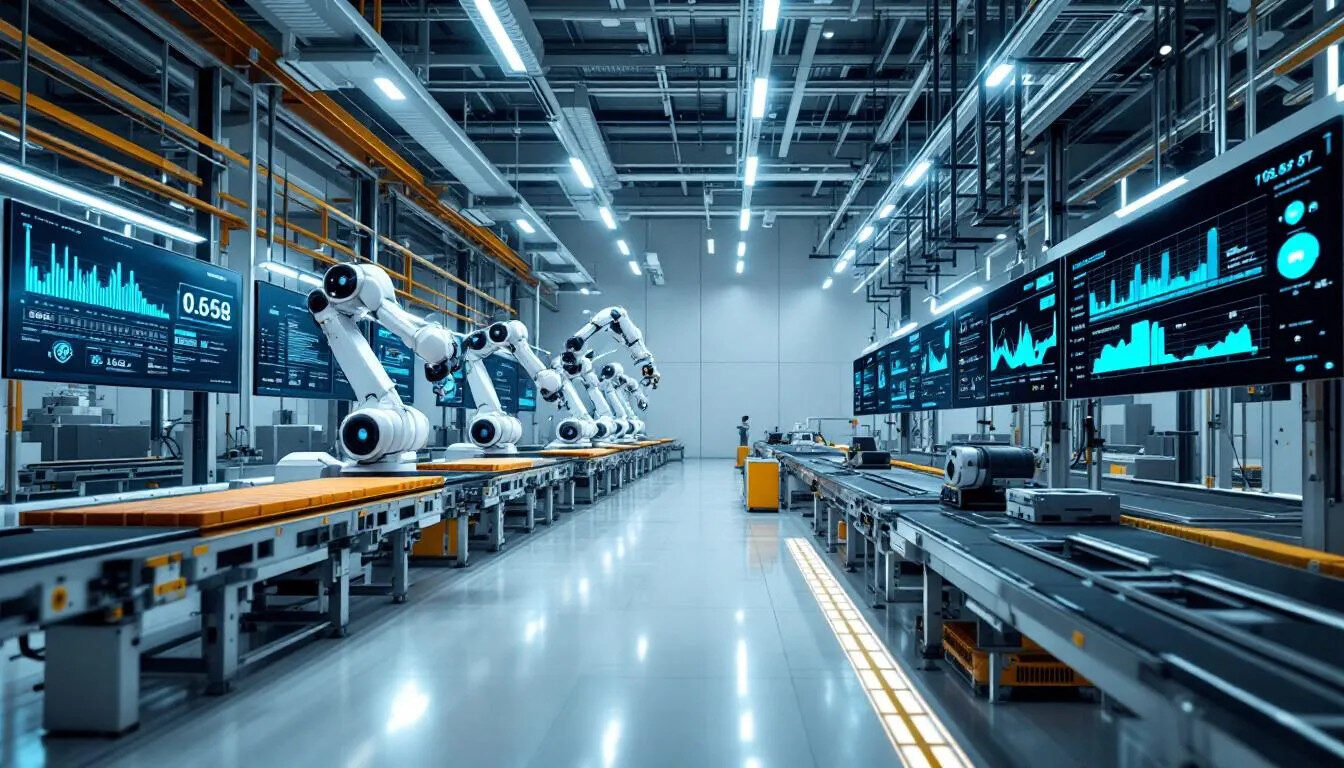
Aerospace and Avionics
In aviation, mechatronics ensures precision, safety, and resilience.
Flight control, collision avoidance, and autopilot systems all rely on mechatronic coordination between sensors, actuators, and intelligent algorithms.
Emerging Technologies Shaping the Next Decade
Industry 4.0 and Cyber-Physical Systems
Mechatronics is the bridge between the physical and digital worlds.
Connected sensors collect real-time data, while AI and machine learning predict maintenance needs and optimize production efficiency.
Digital twins—virtual replicas of real systems—allow engineers to experiment, simulate, and improve before production ever begins.
Soft Robotics and Smart Materials
Soft robotics takes inspiration from biology, using flexible materials to build robots that can safely interact with people and delicate objects.
- In healthcare, soft robots assist in surgery and rehabilitation.
- In manufacturing, they handle fragile components without damage.
Materials like electroactive polymers enable adaptive motion and greater energy efficiency.

Careers in Mechatronics: The Human Side of Intelligent Systems
The demand for engineers who can bridge mechanics, electronics, and software is growing—especially in AI-driven sectors.
According to the U.S. Bureau of Labor Statistics, electro-mechanical technologists earn an average of $75,710, with the top 10 % surpassing $109,000.
While traditional automation roles may grow slowly, opportunities in robotics, autonomous systems, and sustainable manufacturing are accelerating fast.
Essential skills include:
- Mechanical design and simulation
- Control systems and electronics
- Programming (MATLAB, Python, C/C++)
- Data analysis and modeling
Plus, strong collaboration and problem-solving skills—the hallmarks of modern engineering teams.
Education and Training
Modern mechatronics programs emphasize hands-on learning.
Students design, simulate, and build integrated systems combining hardware and software.
Graduate and certificate programs focus on advanced topics like robotics, AI integration, and cyber-physical systems.
Through close partnerships with industry, universities now train engineers to think beyond traditional boundaries—ready to innovate in real manufacturing environments.
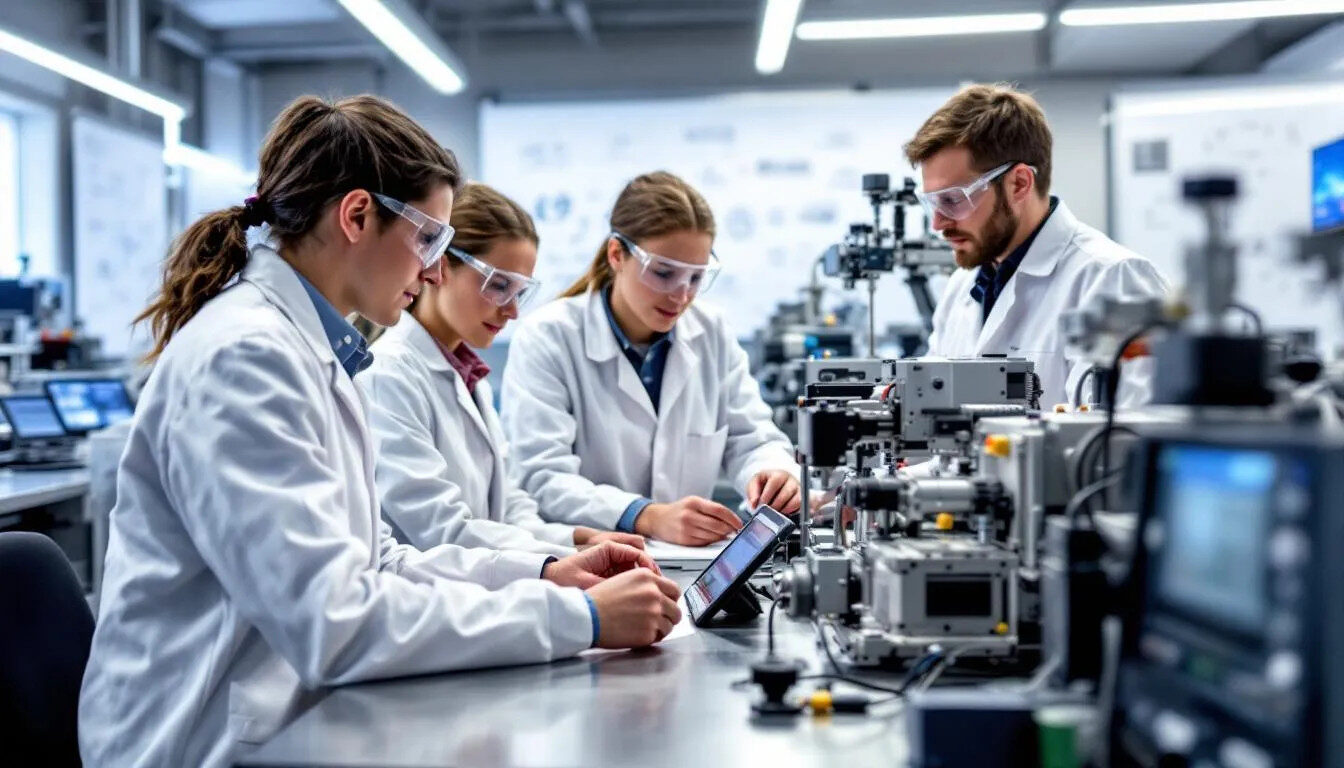
Toward a Sustainable Future
The next frontier is ecomechatronics — combining automation with environmental responsibility.
Energy-efficient manufacturing, reduced material waste, and renewable-energy integration are no longer optional; they are the foundation of the next generation of industrial design.
As power electronics, AI, and adaptive control evolve, we are moving toward autonomous, self-optimizing production systems—machines that learn, adapt, and sustain.
Frequently Asked Questions
What’s the difference between mechatronics and mechanical engineering?
Mechatronics integrates mechanics with electronics, computing, and control theory—creating smart systems that go beyond physical design alone.
How does mechatronics power Industry 4.0?
It connects machines to digital networks, enabling real-time monitoring, predictive maintenance, and intelligent process optimization.
Which programming languages are most valuable?
C/C++ for embedded control, Python for AI and analytics, MATLAB/Simulink for modeling, and ladder logic for PLCs.
Is mechatronics still a good career?
Absolutely. Its cross-disciplinary nature makes it future-proof across sectors like robotics, autonomous vehicles, and renewable energy.
What is ecomechatronics?
It’s the sustainable evolution of mechatronics—focused on energy efficiency, waste reduction, and integration of renewable energy into industrial automation.
Final Thought
Every major innovation in manufacturing, robotics, or automation today traces back to mechatronics.
It’s not just about smarter machines—it’s about creating systems that learn, adapt, and sustain.
In that sense, mechatronics isn’t just the future of engineering.
It’s the blueprint for intelligent progress.

